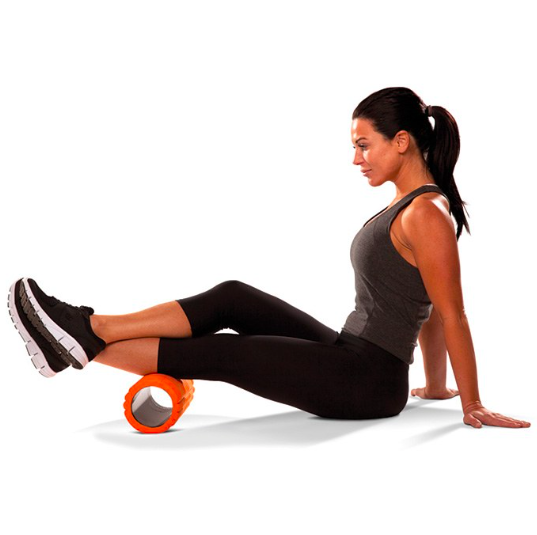Benefits of Foam Rolling & Ergonomics in the Workplace
Did you know that the average office worker spends over 65 percent of their time at work in a sedentary seated position? Prolonged sitting has been associated with many problems that can be prevented through techniques such as foam roller therapy (that you can do at your desk!) and ergonomics (optimal design) of the workplace. In the course of a 50 year span, the average American will spend 23 percent of their time working. With that much potential desk-time, it is important to take steps to prevent issues like cardiovascular problems, musculoskeletal discomfort and decreases in productivity.
Sitting incorrectly has been associated with an increase in musculoskeletal pain and injury (MSI) in the neck, lower back, shoulders, arms, wrists and legs. This can also be associated with the wear and tear on the muscles, tissues, ligaments and joints of the body. (See below for some helpful tips on how to sit correctly if you use a traditional office chair.) Many options are available as alternative chairs or standing desks that can be used to improve posture.
In addition to ergonomics, regularly using a Foam Roller, which is easily portable, offers many of the same benefits as a sports massage, including reduced inflammation, scar tissue and joint stress, as well as improved circulation and improved flexibility. Techniques utilizing a foam roller are designed to help maintain optimum health while working, and can be done almost anywhere.
Join us at WeWork in Bellevue for a Nutrition & Foam Rolling Workshop from 12-1 p.m. to learn more! Highly recommended for anyone who sits at a desk or works at a computer for prolonged periods of time, and is designed to help improve performance and productivity.
How to Adjust the Way You Sit
Push your hips as far back as they can go in your chair.
Adjust the seat height so your feet are flat on the floor and your knees equal to, or slightly lower than, your hips.
Adjust the back of the chair to a 100°-110° reclined angle. Ensure the upper & lower back are supported, and use inflatable cushions or small pillows if necessary.
Adjust the armrests (if fitted) so that your shoulders are relaxed. If your armrests are in the way, remove them.

